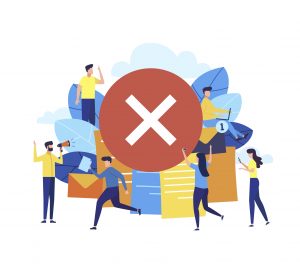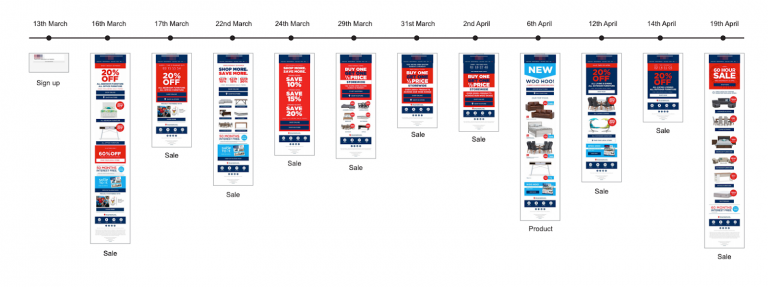19 Nov Why are your customers unsubscribing?

Email marketing is one of (if not) the most effective ways to reach your customers, and often sits at the heart of marketing communications strategies. What does your comms strategy look like? Do you segment your customers and target them differently based on their position in the customer lifecycle? Or do you send the same email to the entire database and hope it will achieve a decent click through performance?
According to Smart Insights, half of marketers feel their email campaigns are very poor to average – which leads me to believe that a ‘spray and pray’ approach is likely the most common.
But not every unsubscribe is bad news. As we’ve said many times before – not all customers are equal. You could be wasting valuable marketing budget sending multiple communications to customers who have no intention of ever shopping with you again. If the customer is not engaged with you after several attempts, they are actually doing you a favour by unsubscribing. You’ll save money in the long-term.
However, this does not apply to all customers who unsubscribe.
Why do customers unsubscribe?
I attended an event recently where one of the presenters explained their brand had over 500,000 customers on their database and 200,000 of those have opted in to receive communications. The first thing that came to my mind was ‘what a wasted opportunity’. Over half of their existing customer base don’t want to hear from them which got me thinking, why do customers unsubscribe?
Irrelevancy
If you’re sending the same email to all of your customers, then it shouldn’t come as a surprise that some are unsubscribing. The content won’t be relevant for everyone. Always remember that each customer is at a different stage of the customer lifecycle. You need to continue the conversation with the customer based on their position. Use the data you have been able to capture to tailor the message. A colleague had her nails painted at the weekend, and 2 days later received a voucher for ‘$5 off this week’. A little frustrating when she just paid full price – perhaps if they recognised this fact and issued the offer a couple of weeks later, they could’ve had a much happier customer.
Lack of personalisation
Personalisation is one of the biggest drivers of customer loyalty and advocacy. Customers today are not only demanding personalisation, they’re demanding hyper-personalisation. They expect brands to know what they want and need before they’re even aware themselves. Your emails need to reflect this. Use this opportunity to demonstrate just how well you understand the customer and their individual needs. Don’t give them a reason to go to a competitor that will show this level of commitment.
Frequency
Do you know what a month in the life of your customer looks like – from an email perspective?
If not, I suggest you map out the communications you sent out last month – in date order, determining if the email was product related or sales focused. You’ll probably be surprised when you see the results. I purchased a product from a retailer and signed up to their program, in my first month I received 10 emails (on average 1 every 3 days). The first email I received was a notification of a sale, as was the second email, and the third……..! Within one month, I received 9 emails announcing a sale or promotion, and 1 email which was product related. If you’re contacting your customer too often (with irrelevant content), then they’re more likely to delete the email, or worse hit the unsubscribe button. Example below.

Exclusivity
One of the main reasons why customers are happy to share their personal information is because they believe the brand can add value to them. That they will have access to products, offers and information ahead of anyone else. Therefore it can be frustrating for a customer to see a special promotion splashed across stores or social media before they have received any form of contact from the brand to let them know first. It deeply affects the way the customer perceives their value to the brand. It doesn’t make them feel special or that they have any form of exclusivity, so feel there’s no point being signed up for emails.
Summary
Many brands don’t value a customer’s email address as much as they should. They abuse it and think they can email whenever they feel like it in order to meet their KPIs.
When a customer unsubscribes, it’s important that you do some research into that customer. Were they previously engaged with your brand? What does their purchase history look like? What content did they receive which drove them to unsubscribe? These insights will help you understand the potential lifetime value of the customer you probably just lost, and the reason why they disengaged with your brand. You’ll learn some great lessons for your future communications strategy planning.
We recommend including an exit survey onto an unsubscribe form to learn exactly why the customer no longer wants to hear from you. You can’t change what you don’t know and prevent future customers from leaving you.
Customology are specialists in customer lifecycle management. Contact a Customologist today on 07 3902 7700 or hi@customology.com.au for more information on how we can help you implement an effective, personalised customer communications strategy.
Subscribe to receive our latest insights
|
Listen to...
|


